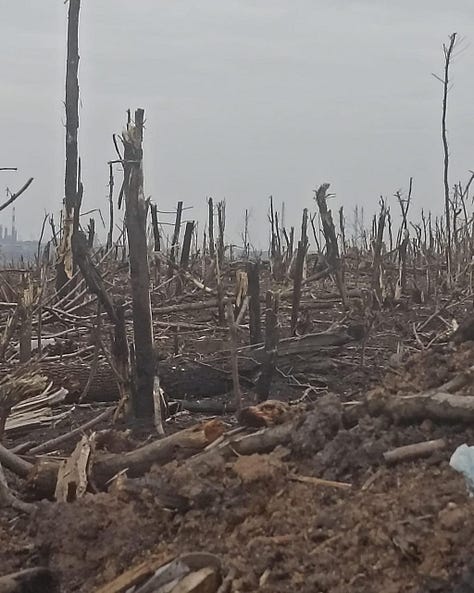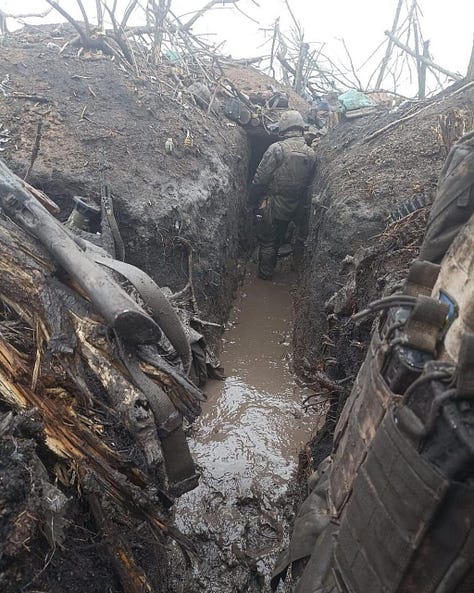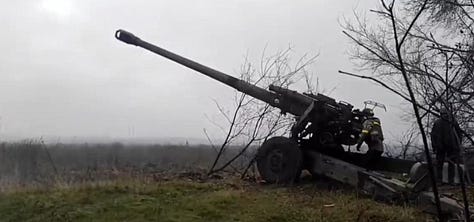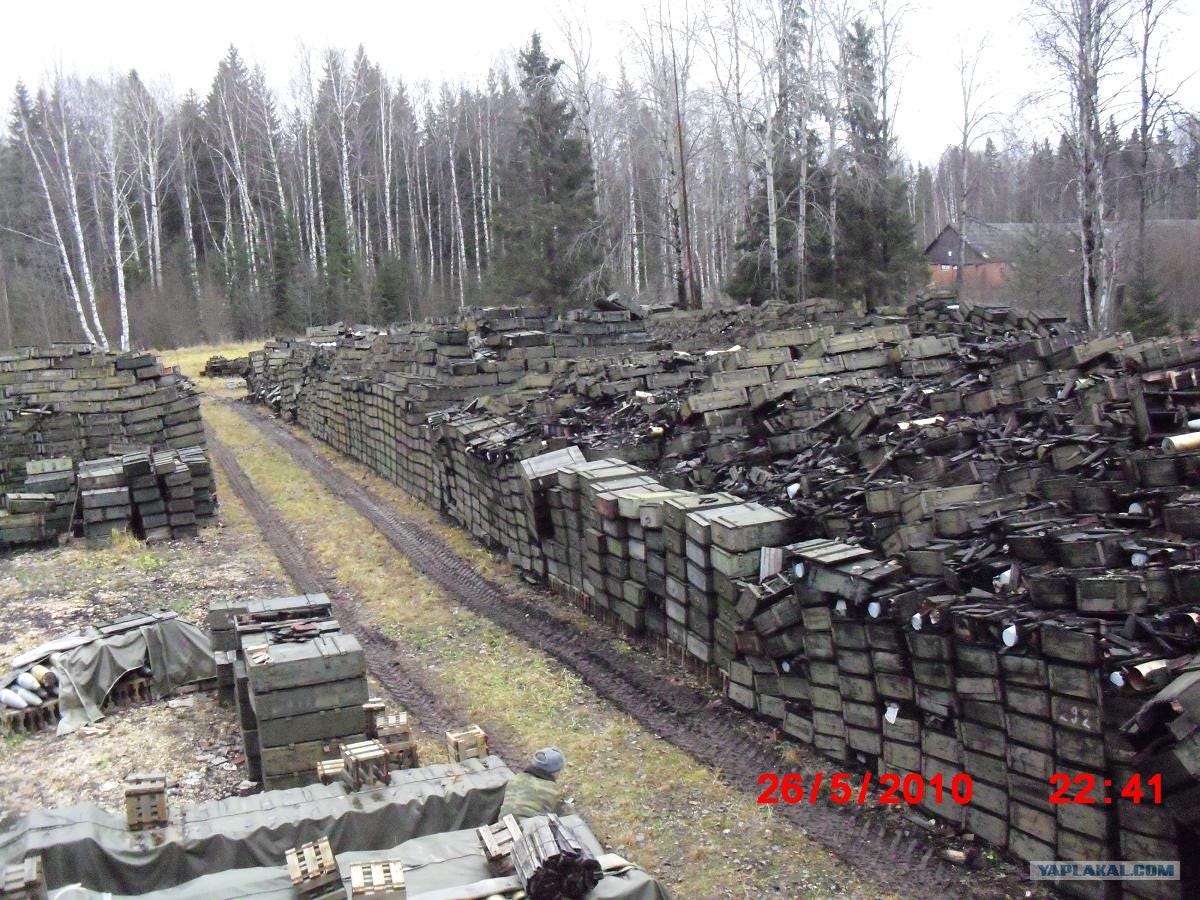Friction in War - Why Attrition Favors Ukraine
What Clausewitz can tell us about the prospects of a strategy of attrition
Everything in war is very simple, but the simplest thing is difficult. The difficulties accumulate and end by producing a kind of friction that is inconceivable unless one has experienced war.
- Carl von Clausewitz



With images of lines of trenches and reports of massive artillery duels and shell shortages, a discussion of attrition in the Ukraine war from a Clausewitzian perspective is more than due. In this article I will argue that a Russian strategy of attrition is unlikely to be successful due to a number of advantages that Ukraine possesses.
To begin, I’ll outline the two main areas of advantage for Russia in the context of attrition. The first is the size advantage relative to Ukraine. Russia has a larger economy and greater population than Ukraine, which gives it greater capacity to endure losses and sustain operations. Russia began this war with a larger army and a larger economy, including an extensive arms industry. As a result, casualties and expenditures are more easily borne by Russia than Ukraine. Russia can hope that a strategy of attrition will cause the collapse of the Ukrainian economy or the hollowing out of the Ukrainian army. We’ll return to this subject when we address how Western aid affects the balance.
The second factor is Russia’s arms stocks. While the majority consists of poorly maintained Soviet vintage, those qualifiers aren’t as relevant when it comes to equipment like basic artillery and ammunition. By utilizing these stocks, Russia can avoid forms of offensive action that rely on coordination, initiative, and morale, fields in which it is lacking. Instead, artillery duels can create a contest of materiel, where Ukraine has to pay a bloody price in order to withstand numerically superior Russian artillery
The combination of these two points means that Russia has the ability to constitute superior numbers of artillery in a chosen location and subsequently sustain a prolonged battle. It accomplished this at the battles of Sievierodonetsk and Lysychansk. On the whole, Ukraine is forced to expend truly massive quantities of shells in counter Russian artillery pressure. In general, it has been successful at this, but it remains a threat as Ukraine struggles to transition to NATO hardware and NATO countries show reticence to deplete their own stockpiles to supply Ukraine with ammunition. This position is dangerous for Ukraine as its domestic military industrial complex is unable to supply equivalent shell quantities and it is instead reliant on the willingness of the West to supply sufficient ammunition.
While the Russians have fields of advantage, there are four factors that place them at an overall disadvantage in the attritional battle:
1. Friction
Ukraine is defending its own country, whereas Russia needs to sustain operations across miles of occupied territory. Clausewitz tells us that friction is a constant in war, but it is particularly pronounced when operating in hostile territory. Just as in physics, an object must overcome the resistance of the medium it rests in, so too does any action in war encounter the resistance of endless minor difficulties that impede the overall effort. The local population will cause harm, from anything from poor directions, to outright guerilla warfare. Each mile supplies must travel represents another opportunity for them to be diminished or destroyed by hostile action. At the same time, the mundane forces of accident, corruption, and incompetence are amplified on foreign soil. Supply lines and systems have to be rapidly constituted in invaded lands, with pre-existing infrastructure both unfamiliar and potentially damaged.
2. Sanctions
Sanctions hurt. Not in the sense that they can inflict enough damage to convince Russia to withdraw, but in the sense that they confer a meaningful advantage to Ukraine. By earning the enmity of the West, Russia no longer has access to the world’s most modern and efficient modes of production. Not only does Ukraine continue to have access to Western expertise and markets, but Western industrial, financial, and military aid. One of the areas this is most crucial is in battlefield medicine. The Russians have been sent into battle without basic first-aid equipment such as tourniquets. By contrast, Ukraine has been supplied with a vast sum of non-lethal aid, in addition to the more moderate quantities of lethal aid, which means a wounded Ukrainian is far more likely to recover than a wounded Russian. Western aid is of course dependent on the continuing interest of the West in providing it, however the price paid by the West is negligible, and there are few indications of a change of course. Therefore, in the long term, Ukraine possesses an advantage in the economic sphere. Not only is it in a position to improve its own capabilities, but it has access to Western markets and the aid to make full use of them.
3. HIMARS and Intelligence
The combination of HIMARS and Western supplied intelligence allow Ukraine to conduct deep, precision-strikes on critical areas of Russian supply. In most circumstances, individual pieces of equipment do not have relevance on the strategic level and would be out of place in a Clausewitizian discussion of attrition. However, HIMARS is significant because of the confluence of two factors. The first is the asymmetry of the system in its environment. Neither side possesses equivalent capabilities, whether in the form of precision guided munitions (PGMs) with equivalent precision to the HIMARS, or in terms of air superiority. In a contested air environment, HIMARS can fulfill the interdiction role that would typically be played by aircraft.
Simultaneously, Russian intelligence capabilities are insufficient to target the PGMs that are available at operationally significant targets, instead being expended almost worthlessly on terror bombing or infrastructural targets. The second factor of Western intelligence combined with highly precise fires means that HIMARS allows Ukraine to conduct the war on what can only be described as a higher level of sophistication than can be matched by the Russians. It was this superiority that allowed for the dramatic success of the Kherson counteroffensive. Range, intelligence, and precision mean that HIMARS is a genuine game changer for the battle of attrition in Ukraine.
As an aside, if you are wondering why I felt the need to attach a number of qualifiers to that statement, the reason is a trend of viewing the HIMARS as some kind of “wonder-weapon.” This is an easy mistake to make when one considers its undeniable effectiveness. However, the truth is that it is extremely rare for any single system to have appreciable effects on the operational level, a principle which holds true for the HIMARS. The system has been incredibly effective in this context because of the unusual factors of neither Russia nor Ukraine possessing air superiority or indigenous precision strike artillery systems. It is the combination of extensive intelligence and precision strike capabilities that has allowed Ukraine to gain the advantage. That HIMARS happened to be the system supplied for precision strikes is incidental.
4. Politics
Let us zoom out from the equipment and examine the situation with the widest lens available: the political. It is in this most Clausewitzian arena that Ukraine has the strongest advantage with regards to attrition. It bears repeating that Ukraine is irrevocably committed to victory. A nation invaded by a foreign power can endure truly horrendous losses without serious pressure to give in. Each Ukrainian soldier and civilian killed by the Russians deepens the commitment of the Ukrainians to seeing a victorious conclusion to the war.
In contrast, the Russians are conducting a “special military operation” for reasons of high politics. It’s an imperial war of aggression which, despite propaganda about the threat of NATO and “Ukrainian Nazis,” is self-evidently a war of choice. As a result, every Russian casualty becomes an argument for disengagement from Ukraine. The decision to invade Ukraine was made by the Putin regime and the continuation of the war requires continued expenditure of political capital to convince the population that the objects of the war are worth the sacrifice. Ukraine’s defensive war requires no political expenditure from the top to maintain, but is sustained by the organic patriotism that comes with having your country invaded. As a result, Ukraine has an overall higher tolerance of casualties than Russia politically.
Some have argued that Russia is too totalitarian for combat losses to be a political threat. However, it must not be forgotten that a totalitarian political climate must be actively maintained. Controlling the information environment by creating narratives to excuse defeats and lack of progress is politically costly. Suppressing the deaths of servicemen and the reactions of their disillusioned families is not a trivial matter. Beyond these means, Putin’s regime has chosen to take a draconian line when it comes to mere discussion of the war. While a hard-line makes it more difficult for opposition to organize, it also represents a grating intrusion into the lives of ordinary citizens. This is an expenditure of the regime’s goodwill and a factor that makes it difficult for the politically apathetic to remain so. As we have seen recently with the failure of China’s “Covid Zero” policy, even in countries with long histories of totalitarian rule, persistent intrusion into the personal sphere produces dangerous levels of resentment.
It is also argued that Russia has insulated itself from the political costs of attrition by recruiting from prisoners and ethnic minorities. The information regarding recruitment of ethnic minorities is muddled, with recent reports suggesting that ethnic Russians have suffered demographically proportionate casualties. However, we have already seen that Russia has paid a price by simultaneously propagating a ethnic nationalism narrative and mobilizing ethnic minorities in the suicide attacks on training facilities and reports of fragging of officers.
Beyond this, there are a number of known problems that arise from pressing the unwilling into military service. Most obviously, poorly motivated troops will be less combat effective, meaning they will suffer higher losses. A poorly motivated conscript puts as much strain on the logistical tether as a better trained and motivated soldier. These troops require the same food, the same fuel, the same ammunition, the same medical care, and provide substantially less combat power, meaning that these supplies are more quickly attritted. What’s more, non-combat frictional forces that attrit all units particularly affect unmotivated conscripts. They are far more likely to be careless with equipment and less likely to maintain safety discipline. In the hands of these troops, accidents will be more common and equipment will degrade more quickly. The more that Russia mobilizes groups unfriendly to the regime, the higher a rate of attrition of materiel it can expect.
The effects of attrition in terms of morale are also amplified by the inclusion of unmotivated conscripts. Attritional warfare wears heavily on the nerves of those on the frontline, particularly so when they are flooded with prisoners, dissidents, and other undesirables of the regime that have no interest in the war. Russian soldiers that would otherwise maintain high morale and discipline will find themselves in an environment in which cynicism, pessimism, and indiscipline is espoused by their comrades. The quality of mobilized forces also fosters resentment towards higher leadership that further erodes morale. The people sent to the front clearly aren’t interested in victory, which, to Russian soldiers, means political and military leadership is clearly not committed either. In that case, why should they be? This sentiment is incredibly corrosive to an army and the Russian practice of importing it is self-defeating.
In addition to these direct effects of contact with low morale elements, the knowledge that one is reliant on poorly motivated conscripts for survival is itself demoralizing. Regular Russian forces fight with the knowledge that their flanks and rear may be protected by soldiers that have no interest in fighting. In this manner, the mobilization of opponents to the regime increases both the losses from attrition but also compounds the morale effects of attrition. This is particularly significant because it increases the danger of a general collapse of the Russian army.
In conclusion, Russia is pursuing a strategy of attrition not because it is a guarantee of victory, but because it does not have the capacity to fight in any other way. Attrition places disproportionate political pressure on Russia, both in the actual political discontent it generates, but also in the political capital and state capacity used to suppress discontent. In addition, while Russia’s deep ammunition stocks and size relative to Ukraine give it some advantages, in the long run, Ukraine’s access to Western aid and Western markets give it a broader base than Russia from which to sustain its war. In general, the forces that Clausewitz identifies gives the defender numerous advantages in an attritional struggle. Russia lacks sufficient advantages to overcome these factors and therefore will be unable to defeat Ukraine through a strategy of attrition.








